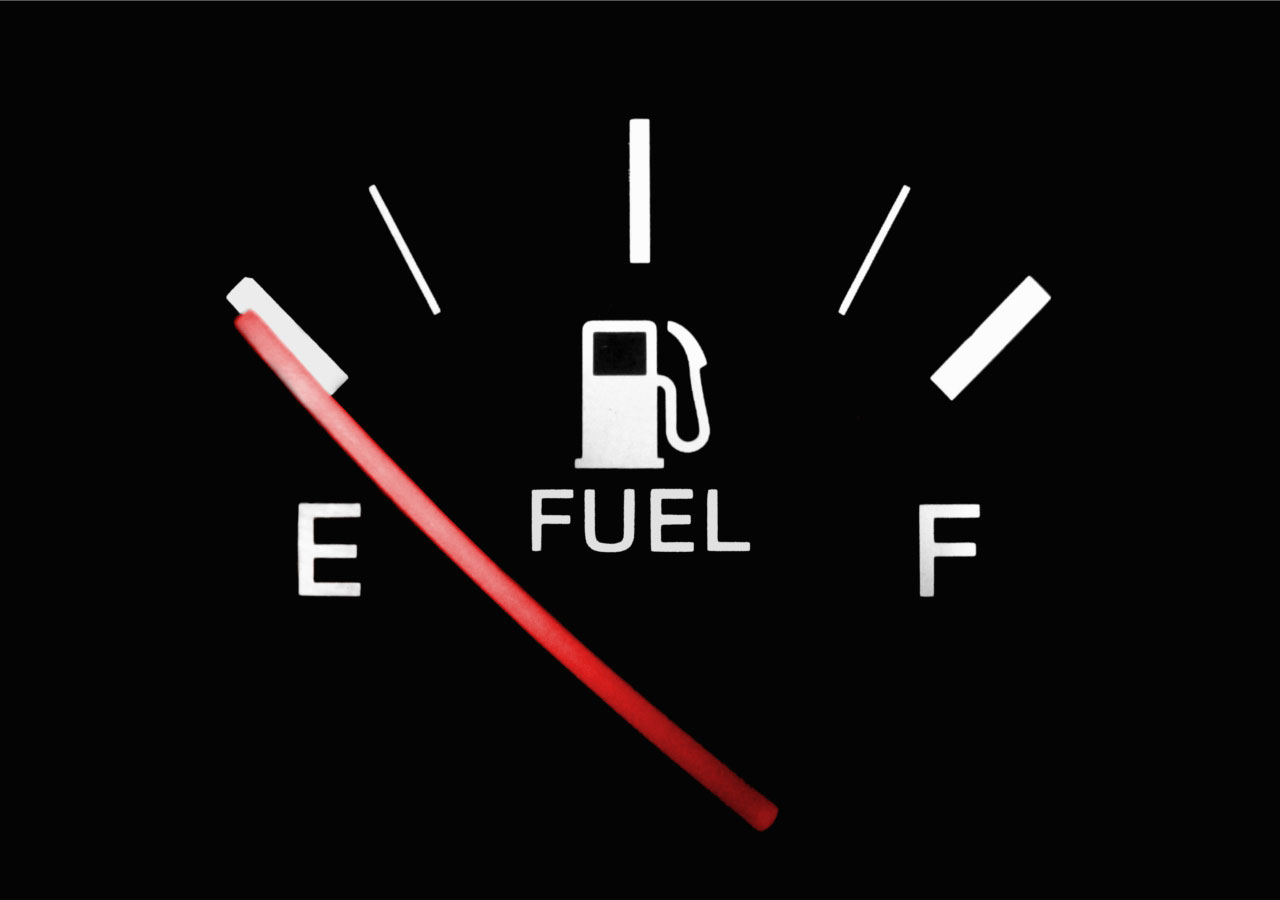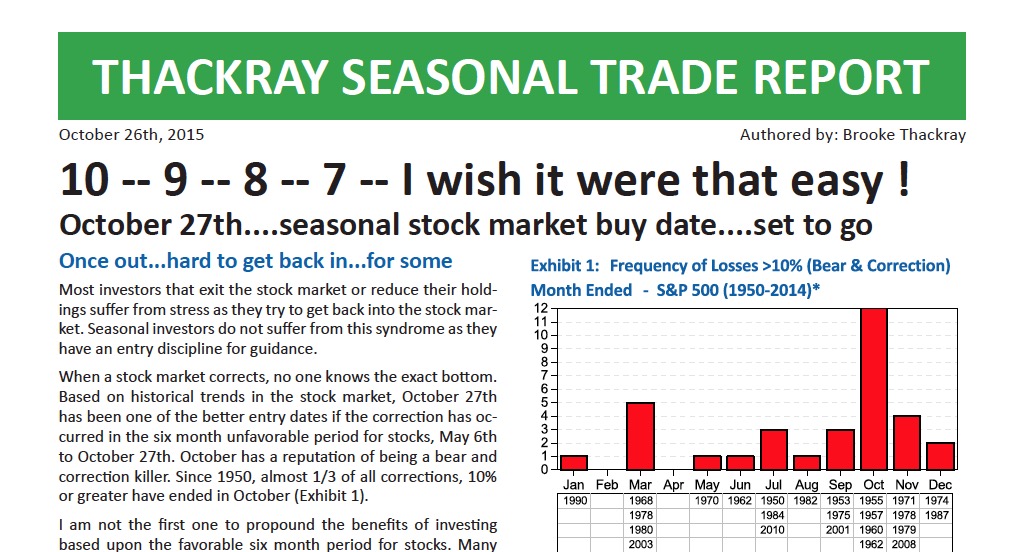Running on Empty
by Guy Haselmann, Director, Capital Markets Strategy, Scotiabank GBM
Time to Hike Rates
• It makes little sense to me why the market is only pricing a 6% probability of a rate hike at the October meeting, 30% for December, and only a near 50/50 probability all the way out to March 2016. The statutory mandates of the Fed as stated in the Federal Reserve Act are “maximum employment, stable prices, and moderate long-term interest rates”. All three have been fully realized.
• The unemployment rate is 5.1% (full-employment). Core CPI has been stable for years and printed 1.9% yesterday; remarkably close to the Fed’s self-imposed target of 2%. For a few years, Treasury rates have been stable at near-historical low levels. In addition, the 4-week moving average of Unemployment Claims fell to its lowest level since 1973. The most recent employment report was a bit weaker than expected, but it fell within a standard margin of error. Yet, the Fed continues to remain at the emergency rate of 0.0%.
• At the September meeting, the FOMC talked up the economy, but refrained again from hiking rates, citing “international developments”. By making this decision, the Fed has to be careful it does not also provide an ‘emerging markets put’.
• As the October meeting approaches, international developments have settled down. Emerging market stocks indexes and currencies have bounced since the September FOMC meeting. Chinese markets in particular have calmed down and have traded higher. The US stock market is higher. The trade-weighted dollar is lower. Credit spreads are tighter. The arguments for a hike at the October or December meeting should have increased not decreased.
• The recalibration in rate hike probabilities could be the result of the “data dependent” language which has never been adequately defined. It is suspect to believe that monetary policy for an $18 trillion complex global economy is being determined by a backward looking piece of monthly economic data. Since Fed officials often cite the 24-month lag upon which monetary policy works, how can the Fed be both back-looking and forward-looking? Thus, it is really about cumulative progress over time, not monthly data.
• It is dangerous that over the last year or so, whenever an economic number is released that is slightly weaker than forecasts, moral hazard kicks-in with a full-steam-ahead risk-on market reaction. Fed officials are ignoring this dynamic, but it should be a warning about ‘financial-instability’ and investor behavior.
• Since that meeting, Fed officials continue to give mixed messages. Dudley, Brainard, Evans, and Kocherlakota suggest rates will not rise in 2015. Alternatively, Bullard, Lacker, Mester, Fischer, and most importantly Yellen, intimate ‘lift-off’ at the October or December meeting. This divide is exacerbating market volatility. The sooner the FOMC speaks with a unified voice, the better for all. Fortunately, clarity looms as the outcome is ultimately binary.
Indebtedness
• The best, but highest-risk, argument for risk-seekers is that the Fed may have generated a condition where it is trapped forever at the zero lower bound and must perpetually fuel a condition of ever-rising financial asset appreciation and credit expansion to prevent a catastrophe. Moreover, the window to extract itself from this dangerous state might be closing. Let me explain.
• One of my biggest concerns is the massive amounts of global indebtedness springing from the Fed’s low rate policy. Low rates incentivize borrowing which in turn steals from future growth (particularly due to how the debt proceeds are being used). As debt levels aggregate, a state of perpetual and exponential expansion in debt levels might be needed just to maintain the current state. In the early 1980’s, $4 of debt was needed to generate $1 of additional real GDP, but last decade it took $10 of additional credit, and since 2006, the amount has risen to $20.
• Is this the situation Hyman Minsky warned about in his “Financial Instability Hypothesis”? He described the impact of debt on the behavior of the financial system by defining three stages: “hedge”, “speculative” and “Ponzi financing”. Growth and prosperity were initially created through early loans, which increase confidence and in turn drive speculation. If and when higher rates slow revenue, the ability to pay principal and interest might be jeopardized, leading to Ponzi financing or default.
• With large amounts of indebtedness, cash flow shortages could result in asset sales to meet obligations. Since assets are typically used as collateral against debt, deflation could have the same result. Deflation lowers the value of assets, making liabilities harder to pay back as money due has less purchasing power. This is the basis of Irving Fisher’s “Debt Deflation Theory”, a likely concern of the FOMC.
• Where are we today? Let me answer it this way. Legendary investor Benjamin Graham distinguished the difference between investing and speculation by stating that an investment should afford, “Promises of safety of principal and a satisfactory return……operations not meeting these requirements are speculative”.
• If the Fed is indeed worried about any of these dynamics, then waiting to extract itself from this state is only made more difficult by waiting. The longer it waits, the greater the probability that it gets trapped in a powerful vortex from which the only way to extract itself is to allow economic destruction and massive debt defaults. The point of no return may have already passed. Global indebtedness is at least three times what it was less than 10 years ago, and accelerating at a lofty pace.
What Should Investors Do?
• Investors are too complacent (the Minsky-Moment). Too many are still trying to profit from the Fed subsidy of past stimulus. Investors remain loaded in risk assets, incentivized by the need to beat peers and benchmarks and comforted into complacency by the Fed ‘put’. The true level of risk is being ignored.
• The pervasive mentality of seeking maximum risk has become a terrible risk/reward trade for two main reasons.
o Firstly, the Fed has fueled a massive stampede into financial assets, yet it can no longer provide any additional fuel in the form of interest rate cuts or via a growing balance sheet (QE4 will never happen). Promises of merely maintaining the current level of stimulus will be inadequate.
o Secondly, high prices mean lower future returns and greater downside. The fact that the Fed is close to ‘lift-off’, and close to shrinking its balance sheet (in 2016), means that downside risks are much greater than investors realize. The herd has not yet adequately de-risked.
• Let me deviate here as some of you may still be focused on my comment that “QE4 will never happen”. Let me explain it very simply. The Fed is already under great scrutiny and criticism from many in Congress. Should the Fed attempt QE4, Congress would likely try to re-structure the Fed; likely jeopardizing its independence. This will actually be the topic of the speech at the Money Marketeers dinner on Monday night: http://moneymarketeers.org/next_event.php In addition, the Fed does not want to ‘become’ the Treasury market (in spite of the Japan precedence). The Fed is already hoarding over 40% of all outstanding Treasuries longer than 10 years; and, in doing so, it is having a major impact on the repo market.
• The time has arrived for asset managers, and those who construct portfolios or control investment money, to shift exposures. Most portfolios’ exposures primarily consist of stocks and bonds, many with a ‘60/40’ mix as their starting point. Adjustments typically take place through diversification and overlay factors consisting of variations in time, sector, and geography. Unfortunately, stock and bond diversification alone will not be enough to adequately protect a portfolio during the years that follow zero rates and global QE programs.
• Comments and a “to-do list”:
1) It is time to find ways to preserve capital. Return of capital strategies now trump return on capital pursuits. Particularly as uncertainties are growing due to: disjointed and confusing Fed communication; an opaque Chinese slowdown; the wild west of US politics and its elections; and EU refugees, to name a few.
2) Where possible, transition from financial to real assets. As investors reduce beta and hidden beta exposures, consideration should be given to real assets, such as, real estate, farm land, collectables, art, and other non-correlated and less-cyclical assets.
3) Cash has never had better optionality or a lower opportunity cost.
4) I remain a bond bull in long Treasuries for regulatory, technical, and fundamental reasons. As I have outlined in several earlier notes, long-dated Treasuries still remain an excellent place invest.
5) Find companies and countries with low levels of debt and stable cash flows.
6) Despite recent bad press, alternative investments should be considered. Some specialized hedge funds are attractive, simply because they ‘hedge’ and are experts in a given areas.
7) Place larger premium on market liquidity and counter-party risk.
• Bottom line: As a result of central bank actions, many assets today pose too much risk for too little return.
“Never delude yourself into thinking that you’re investing when you’re speculating.” - Benjamin Graham
Regards,
Guy
Guy Haselmann | Capital Markets Strategy
▬▬▬▬▬▬▬▬▬▬▬▬▬▬▬▬▬▬▬▬▬▬▬▬▬▬▬
Scotiabank | Global Banking and Markets
250 Vesey Street | New York, NY 10281
T-212.225.6686 | C-917-325-5816
guy.haselmann@scotiabank.com
Scotiabank is a business name used by The Bank of Nova Scotia
















